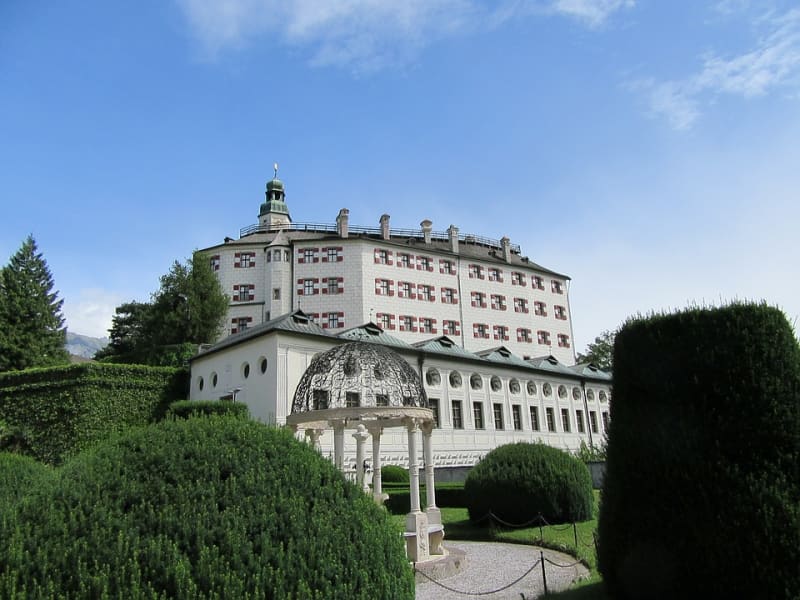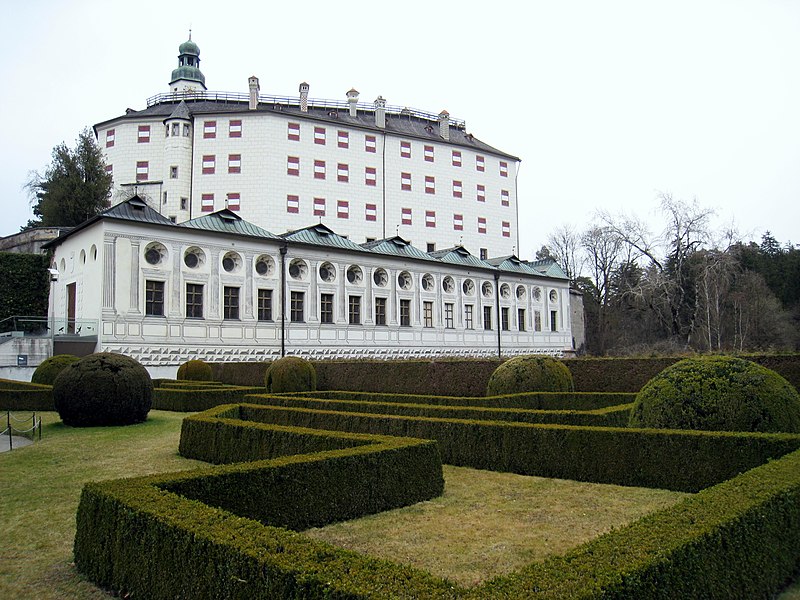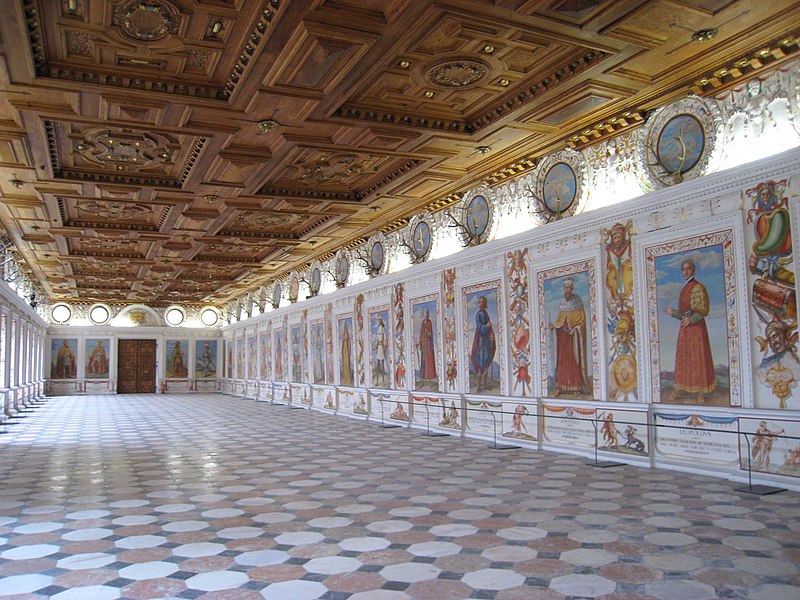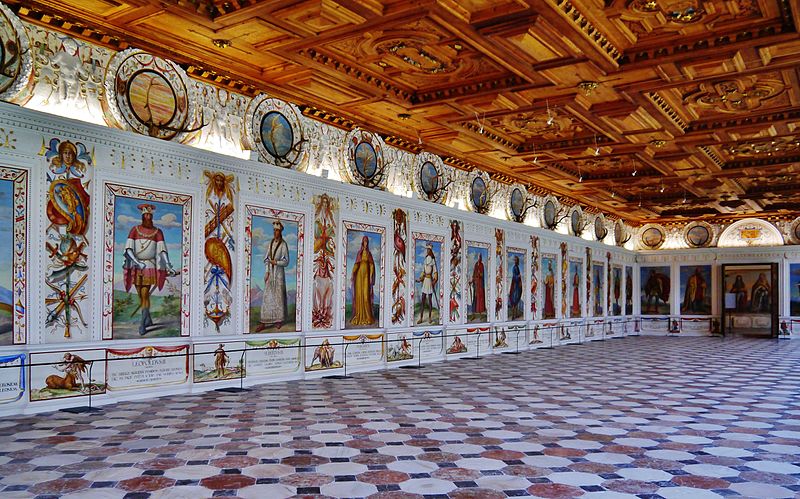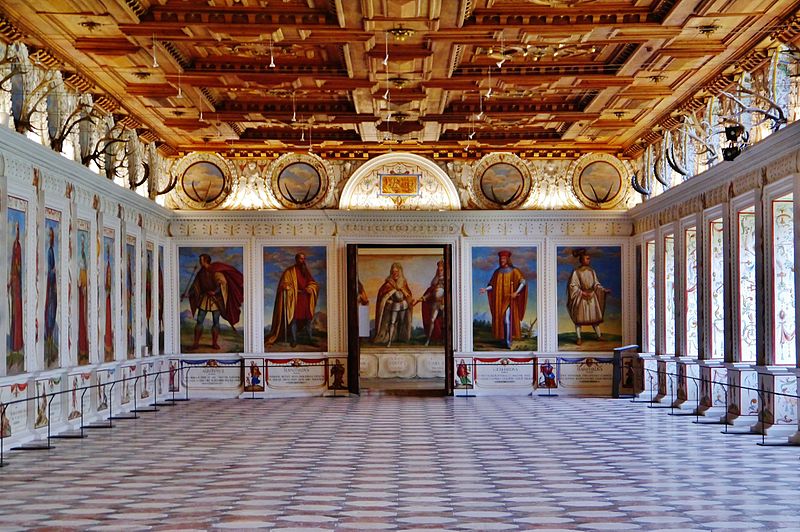Ambras Castle
Austria is simply strewn with luxurious medieval castles that are scattered throughout the country. But one of them emphasizes its significance, as evidenced by the chasing of the castle view on one side of the coin of 10 euros - Ambras Castle, located in Innsbruck. Its historical significance is associated with the ruler of Austria and Tyrol, the Archduke of Austrian Ferdinand II. But his story began long before that.

The beginning of history
For the first time, Ambras became known in the 10th century, when he served as a fortress and residence for representatives of the Andex dynasty, owners of many lands, including in Tyrol. Soon, in 1133, the castle was destroyed, and remained in a destroyed state until the 16th century, until it passed into the possession of the Austrian monarch Ferdinand II. They were hired by Italian architects to rebuild the remaining ruins into the Renaissance castle.
Ferdinand II was a passionate patron of art and culture. He collected collections of books, paintings, sculptures, rarities, weapons, armor, jewelry. All these treasures have been preserved in Ambras Castle to this day. After 1595, Ambras Castle passed from hand to hand, and only in 1919 did the revival of the castle-museum begin under the auspices of the Austrian state. In 1970, the beginning of its large-scale restoration was laid, and already in 1981 the doors of the castle opened for visitors.

Ambras today
Above Innsbruck, from the height of an alpine hill, as if floating like a cloud, the snow-white building of Ambras Castle. Looking at his appearance, which looks more like an administrative building than a castle, it is hard to imagine that once it was Ferdinand II's favorite residence. However, having fallen inside, you are rewarded in full.
Ferdinand's plan was to design a castle divided into 2 parts. The lower part was created on the ruins of the fortress, and the upper part was superstructure. The lower part of the castle was conceived to place its many collections, which were divided into themes. According to the idea of the monarch, all the exhibits are ordered: everything that was made of one material lay nearby. Each type of material is laid out on a substrate of a certain color, for example: all gold objects lie on a blue background, made of stone - on green, wooden products - on red, etc.
Hall of Arts and Miracles
In these chambers, collections are exhibited: jewelry and silverware, crystal cups, coins, bronze sculptures, caskets, figurines, wood carvings. Rarities and a collection of “ Exotica ” are also exhibited in this room, in which items brought from outside Europe are collected. Among the exhibits there are many wonders: a two-headed animal, a bone figurine of Death, a portrait of a man with a hairy face and more.
Armory
In this part of the exposition is everything that was received in the form of diplomatic gifts or won in battle. Here is a collection of weapons, armor, ammunition, equipment, personal weapons of the monarch, sculptures of horsemen in uniforms and horses. Rare weapons found their place here: swords, bows and arrows, sabers, helmets, saddles, shields and much more.
Gabsburg Portrait Gallery
The gallery presents two hundred paintings by famous artists who serve not only the history of the Habsburg dynasty, but also serve as evidence of the evolution of portratism from late Gothic to classicism. Among the paintings you can see the works of Rubens, Titian, Diego Velazquez, Peter Paul and many other popular portrait painters.
Spanish Hall
The Spanish Hall is one of the most luxurious and solemn premises of Ambras Castle. This gallery is decorated with amazing frescoes, mosaic doors made of various tree species with a decorative Kesson gilded ceiling. Portraits of 27 Tyrol rulers hang on the walls, ranging from the first Austrian monarch from the Habsburg dynasty Albrecht I to Ferdinand II. Portraits are all made amid landscapes. Initially, the hall was designed for balls and receptions. Now the gallery hosts musical classical concerts, festivals of ancient music.
What else to see
On the territory of the complex there is still much interesting to see: a courtyard with fresco painting, a Nicola Chapel, a Gothic sculpture hall, a bathtub of the Philippines Wellzer and much more. After excursions to the castle, you can enjoy a pleasant rest in the park, the landscape of which is made according to the principle of the reserve, with gorges, rocks, an artificial waterfall and a mixed forest. Its area covers 20 hectares. A well-groomed English park spread in the northern part of the castle. Ambras Castle is a work of art of the 16th century, it is rightfully considered the most beautiful castle of Tyrolean land, which stores the most valuable treasures.
